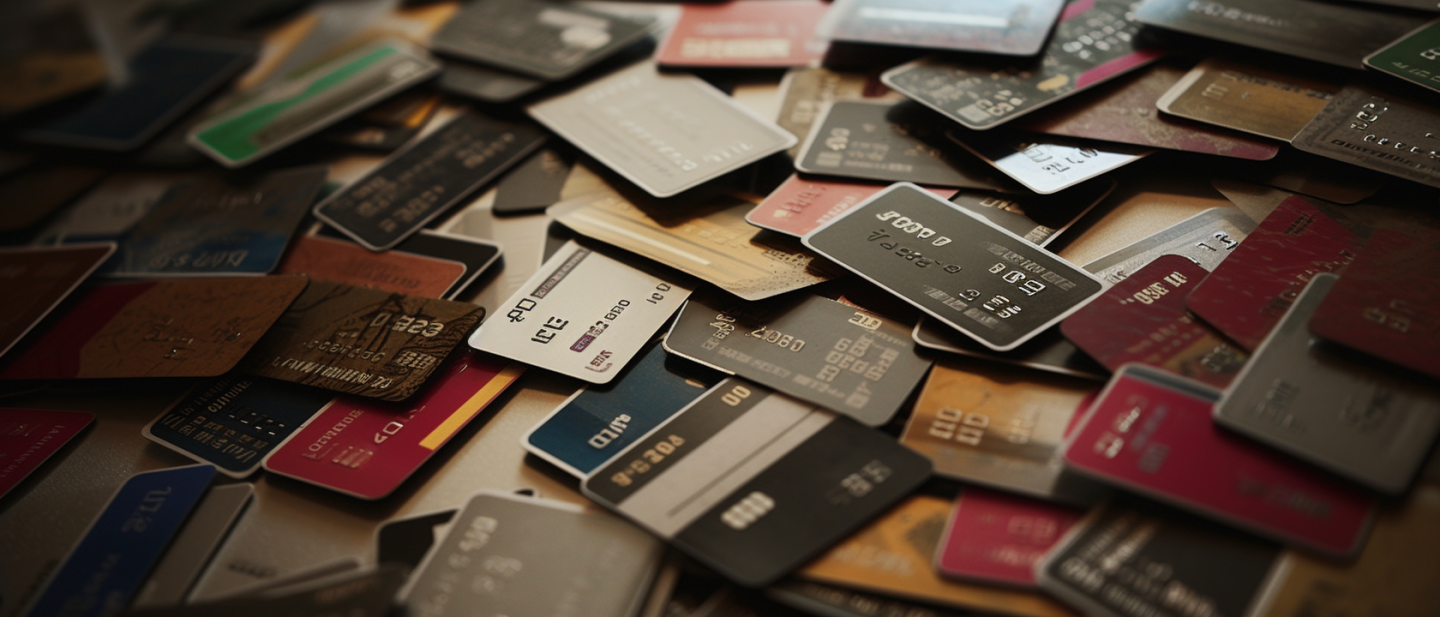
Table of Contents
- Many banks and credit unions charge fees for everything from overdrafts to basic monthly account maintenance
- Although individual fees aren’t particularly expensive, they can add up to hundreds of dollars per year if you aren’t careful
- By choosing the right accounts and taking certain precautions, you can avoid most, if not all, bank fees
- Many online banks, in particular, offer limited fees mixed with other perks to entice digitally savvy consumers
Banking can get expensive. Monthly maintenance, overdraft and ATM fees can siphon dollars and cents out of your account every month. These small expenses often go unnoticed until they add up to hundreds of dollars over the course of a year.
The good news is that banking doesn’t have to be this costly. If you’re careful, it may not cost you anything. But that means you need to know the common bank fees and how to avoid them. Here’s a look at seven fees that can ding your bank account, along with tips to help you make sure they don’t.
Monthly Maintenance and Service Fees
Many banks charge fees simply to keep your account open. Often listed as “maintenance” or “service” fees, these can range from $4 to $25 a month, depending on the type of account. In most cases, it’s fairly easy to avoid these fees.
Avoidance Strategies:
- Maintain a minimum balance. Account fees are often based on keeping your balance above a certain level, especially for savings accounts. Be sure you know that level and keep enough funds in your account at all times.
- Hold checking and savings accounts at the same institution. Many banks will waive maintenance fees if you open both types of accounts.
- Set up recurring direct deposits. Ask your bank whether it will waive fees if you set up direct deposits from your employer or another source. In many cases, this will even override minimum balance fees.
Sidebar:
Many banks and credit unions, especially online-only options, offer no-fee accounts that don’t require you to jump through any hoops. Many of these online checking accounts, such as the Capital One 360 Checking account, even pay a small interest rate. With online banks, it may be more difficult to bank in person or find in-network ATMs, so you should ask about these options before you sign up.
Out-of-Network ATM Fees
Banks typically have their own network of ATMs for making cash withdrawals and deposits. Credit unions may also have their own networks or participate in other networks like the Co-Op ATM Network. If you use an ATM outside your financial institution’s network, you’ll usually have to pay a fee to your bank and the host bank.
At most banks ATM fees are usually around $2.50. Again, keep in mind that you may pay that fee twice when you use an out-of-network ATM.
Avoidance Techniques:
- Use in-network ATMs. Of course, the best way to avoid ATM fees is by sticking with your bank’s or credit union’s ATM network. Even when you travel outside of your hometown, you can often find fee-free ATMs from partner institutions. Check your bank’s website for a map of participating ATMs.
- Choose banks that refund out-of-network ATM fees. Even if your bank doesn’t charge a fee for out-of-network ATMs, you may still get charged by the host bank. Some institutions offer to refund any fees you receive from other banks.
- Withdraw larger sums to minimize frequent visits. If you can’t avoid fees, it’s best to minimize your trips to the ATM. For instance, when you’re traveling in an area with no in-network ATMs, try to make only one or two large withdrawals, rather than many small ones, to minimize the total amount of fees you have to pay.
Sidebar:
A growing number of online banks and credit unions offer rebates for fees you have to pay for out-of-network ATMs. For instance, Alliant Credit Union offers up to $20 per month in same-day ATM fee rebates to members. Because many of these digital banks don’t have their own ATMs, this can be a valuable service for account holders.
Excessive Transactions Fees
Although the Federal Reserve lifted the six-transaction limit for transfers out of savings accounts in 2020, many banks still impose and enforce this limit with fees. As a result, you may have to pay anywhere from $3 to $25 per excess transaction over the limit during a given month.
Preventive Measures:
- Use checking accounts for daily withdrawals. The best way to avoid these fees is to rely on your checking account for your regular withdrawal and transfer needs. Checking accounts typically have no transaction limit. If you need to transfer funds from savings to checking to cover expenses, do so in larger lump-sum transactions.
- Stay updated on any waiver periods, like during specific global events. Even if your bank has currently lifted these penalties due to the COVID-19 pandemic, stay alert to any policy updates as the economic landscape changes.
Sidebar:
As economic conditions change in the inflation-heavy post-COVID era, the Federal Reserve regularly revisits its monetary policies to determine the best regulations for an evolving landscape. It may make future changes to the transaction limit rules — or even to the definition of savings accounts — so it’s important to keep up with new policies and understand what they mean for any potential banking fees you may have to pay.
Overdraft and Insufficient Funds Fees
Attempting to withdraw more than you have available in your account can lead to two different types of fees. If the bank rejects the transaction, you may receive an insufficient funds fee. In some cases, your bank may allow your account to dip into the red and charge you an overdraft fee. Both types of fees can be as high as $35 per incident, and overdraft fees can repeat after a certain period if you fail to get your account back above zero.
Strategies for Safety:
- Opt for direct deposits. Automated direct deposits keep a steady flow of cash going into your account, and this can help you avoid overdrafts.
- Activate low-balance notifications. Some banks offer an option to receive a notification via text, email or mobile app when your balance reaches a certain level. After you receive the notice, you can put more funds in your account or avoid making any payments until your next deposit.
- Consider overdraft protection, but be aware of associated fees. Many banks and credit unions offer overdraft protection if you open a linked savings account, but this usually comes with fees of its own.
- Log checks in a register or digital banking tool. Checks often take a while — sometimes weeks — to clear, and it’s easy to forget that you’ve already committed funds to another transaction. Logging outstanding checks will help you keep a realistic picture of your available funds.
Sidebar:
Nowadays, myriad financial tools are available to help you track your bank account in real time. With apps like Mint, YNAB, and EveryDollar, you can connect your bank accounts and monitor your balance and transactions every day so you never have to worry about overdraft or insufficient funds fees.
Wire Transfer Fees
Wire transfers offer a secure, fast way to send or receive money, both within the U.S. and across international borders. However, they typically carry hefty fees of anywhere from $16 to $35, with higher fees for international transfers. These fees usually apply to the sender but may also apply when you’re receiving funds.
Ultimately, there’s no way to avoid wire transfer fees if you need to wire money. However, you can limit how often you have to pay them.
Saving on Transfers:
- Limit wire transfers unless absolutely necessary. In many cases, wiring funds is unnecessary, especially for domestic transfers.
- Lean on online transfers or bank apps. Most banks and credit unions now make it easy to send funds via online banking apps. Alternatively, apps like Venmo and PayPal offer simple ways to send money with little or no fee involved.
Sidebar:
Several popular digital apps are designed for sending money internationally. Tools like Wise and Revolut allow you to store multiple currencies and send low-fee payments all over the world.
Early Account Closure Fees
Many consumers aren’t aware that accounts often come with minimum timeframes before you can close them. Banks typically require you to keep an account open for anywhere from three to six months before you can close it without incurring a fee. Cost varies but can be as much as $25.
Navigating Closure:
- Review your account terms. Familiarize yourself with the bank’s timeframe guidelines before initiating account termination.
- Look for fee-free options. Before you open an account, check for early closure fees if you anticipate closing it sooner rather than later.
Sidebar:
Today’s online banks offer more flexible solutions for customers, leading many of them to drop early closure fees. Before you open an account, research your options to see if these fees apply. However, it’s not a good practice to open and close bank accounts frequently, as this can show up on your ChexSystems record (basically a credit report for banks).
Inactivity Fee
If you leave money in an account you don’t use regularly, you may be surprised to find an inactivity fee on your statement. In general, banks and credit unions don’t want checking accounts to sit dormant, so they may charge anywhere from $5 to $20 if you haven’t made a deposit or withdrawal in a while.
Avoidance Techniques:
- Stay active. Regularly make deposits and withdrawals to prevent inactivity fees. The more you can automate these, the better.
- Check for banks without inactivity fees. Not all banks charge these fees, so check for this if you don’t expect to use the account frequently.
Frequently Asked Questions (FAQs)
What Are Monthly Maintenance Fees?
Monthly maintenance fees are charges some banks impose for the upkeep of your checking or savings account.
What Is A Returned Item Fee?
A returned item fee is a charge when a transaction, like a check, is returned due to insufficient funds.
What Are Foreign Transaction Fees?
These are fees charged when you make a purchase in a foreign currency or use an ATM abroad.










